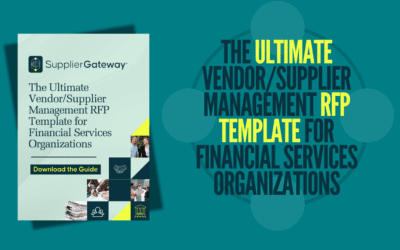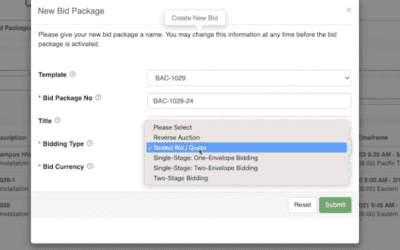LOCAL SOURCING & SUPPLIER RESHORING STRATEGIES AMID GLOBAL TARIFFS In this kickoff episode, global supply chain expert Rosemary Coates joins...
READ MORESourcing
Ultimate Vendor/Supplier Management RFP Template For Financial Services Organizations
by SupplierGateway | Oct 1, 2024 | Articles, eBooks, Financial Services, RFP, Sourcing, Supplier Data Management, Supplier Diversity, Supplier Management
Your Supplier Information Management Platform Vendor Evaluation Fast Track Are you a procurement professional looking to take your supplier information management and...
Unlocking Potential: How Supplier Information Management Transforms Financial Services Procurement
by SupplierGateway | Jun 25, 2024 | Articles, Data Management, Financial Services, Procurement, Risk & Compliance, Sourcing, Supplier Information Management
In the dynamic world of financial services, procurement executives are constantly looking for strategies that can optimize operations and drive value. Supplier Information...
Brief Overview of Opportunity Posting
by SupplierGateway | Aug 9, 2023 | Sourcing, Tutorial, Webinars
Opportunity postings: Learn how to post an opportunity for suppliers in the SupplierGateway...
Supplier Sourcing: How To Find Your Next Supplier
by SupplierGateway | Aug 9, 2023 | Sourcing, Supplier Diversity, Tutorial, Webinars
Learn how to find your next diverse supplier in the SupplierGateway Sourcing...
Understanding the SupplierGateway Bid Tool
by SupplierGateway | Aug 9, 2023 | Sourcing, Tutorial, Webinars
- Safe and Trusted Partnerships: EDC Certification is a Clean “Business” Bill of Health
- ArcNav – Setting Companies Up for Success and Empowering Organizations to Achieve Peak Efficiency
- 15 Crucial Supplier Compliance Checks
- (Webinar) Reshoring & Inclusive Sourcing Reimagined Amid Global Tariffs
- Not Just Your Average Candy – “Candy With a Purpose” – Supporting Wellness with Organic Treats














